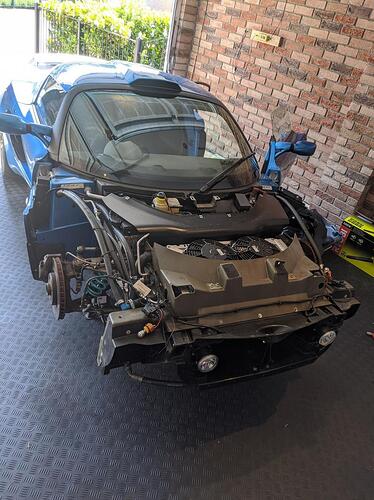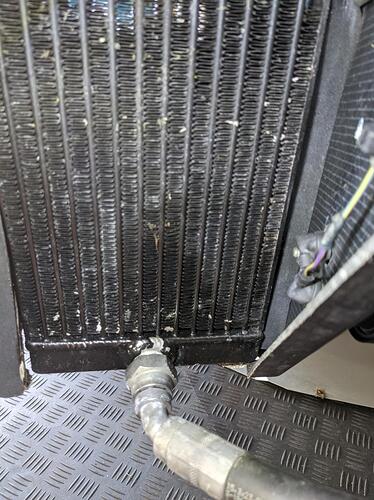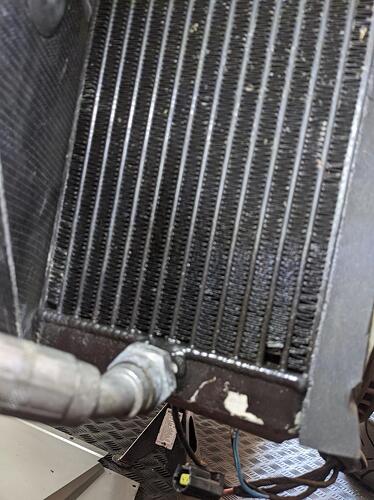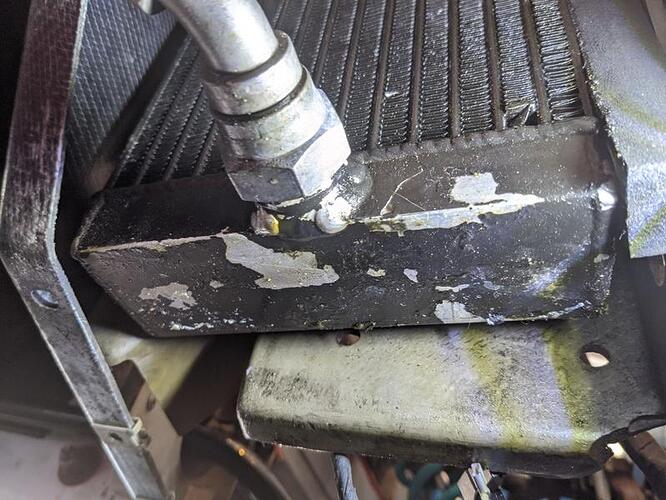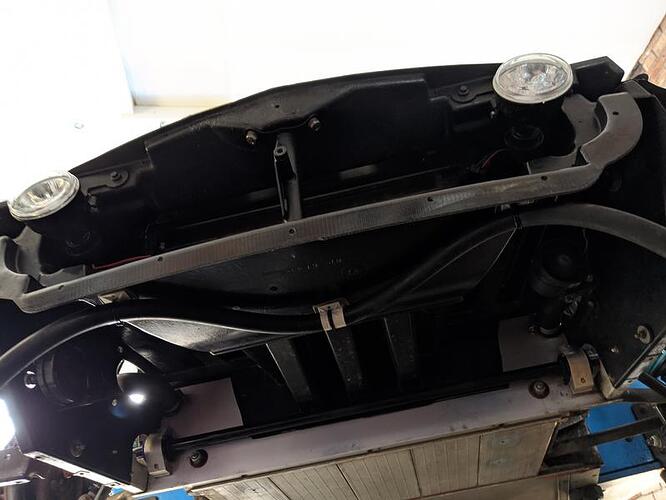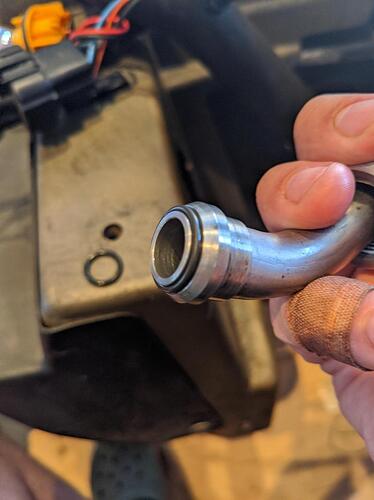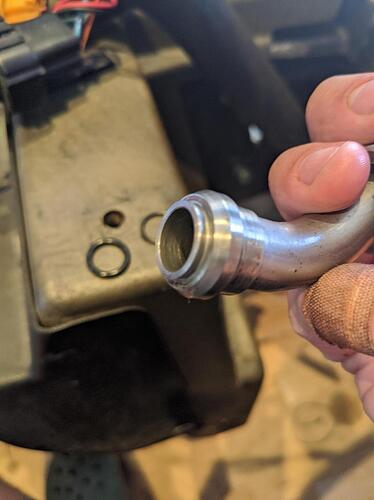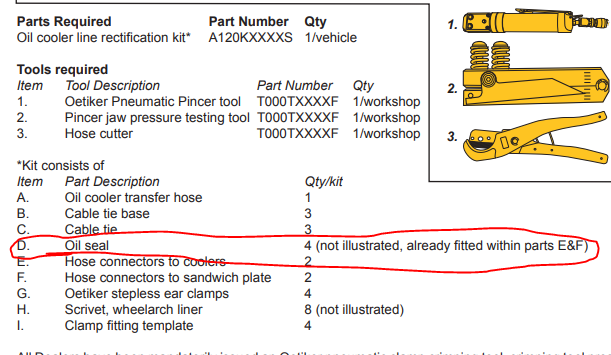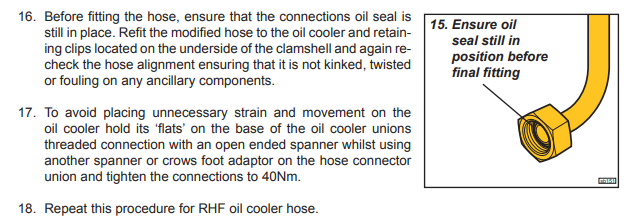Great info, thanks for all that Tim.
The link pipe is supported a little better than my original pics suggest, as per the Lotus TSB for the oil line recall it’s cabletied (via 3m pads) into place on the underside of the crash structure in this sort of W shape.
It doesn’t take a huge stretch of imagination to see those 3M pads giving in at some point, and when I first took off my front clam they were all dried up and failed with the pipe sitting on the undertray itself - which luckily isn’t far to fall.
I’ve given this a lot of thought and I think it’s highly likely to be an issue with the threads and/or o-rings rather than being damage to one or both of the cores. If the cores were damaged surely there would be high pressure jets of oil spraying everywhere at 5bar 
That said, if the threads are knackered and not allowing a proper o-ring seal, then that still leaves me needing new coolers even if the cores are sound.
I removed/refitted these oil coolers over winter so bad workmanship on my side is a very real possibility, but considering the screw fits were all properly tight with no obvious cross threading etc, I struggle to figure out what else could be cocked up - which just leaves o-rings. I did swap them last time round, but I just eyeball matched up the sizes from a variety box of hundreds that I’ve got lying around. I could have got the wrong thickness, or maybe they’re not up to the same spec as the originals - who knows.
I can’t seem to find the spec for the original o-rings, a sledge hammer approach could be to order totally new fittings from Lotus which I imagine/hope include o-rings but timing isn’t on my side for that.
I’d love to get the cores pressure tested but no idea if I can get that done quick enough (trackday next Saturday). I do have a spare set of coolers from an older and higher mileage 111R but they’re completely unknown and have probably been mistreated over they years from being lobbed from storage box to storage box - not sure what I feel about bolting those on.
I’ve already given all of the pipe fittings a good clean out with a pick and some brake cleaner so they’re all ready to go. I’ll spend the rest of today trying to gauge what I think about the health of the cooler cores and then I may bolt everything back up again tonight perhaps using some RTV on the threads. Though I know the threads should not be sealing anything, this will give some piece of mind that:
a) They’re not going to shake loose
b) Protection against corrosion between the threads (the link pipe on my spare coolers is practically welded on due to the galvanic corrosion)
c) Might cushion vibration/movement a bit on the o-ring sealing face if the threads are chemically locked together
d) It’s just piece of mind, if an o-ring fails it’s a bit of a last line of defense.
I can then let the car run for a good chunk of time tomorrow on axle stands and pick out any weeping at all. If there are any doubts, I’ve still got time to buy new coolers from Seriously Dave and even look at getting all of the fittings replaced before the weekend. Time is my enemy here really, I’ve got no intention of cheaping out on a solution, but I just need something in and robust by the end of next week!
![]() However, let’s not give Lotus too much credit… they’ve made some howlers in the past.
However, let’s not give Lotus too much credit… they’ve made some howlers in the past.
